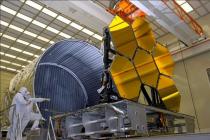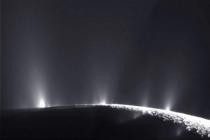In the Solar System there is the Sun - in the center - many planets, asteroids, Kuiper belt objects and satellites, they are also moons. Although most planets have moons, and some Kuiper Belt objects and even asteroids have their own moons, there are no known “moons of moons” among them. Either we were unlucky, or the fundamental and extremely important rules of astrophysics complicate their formation and existence.
When all you have to keep in mind is one massive object in space, everything seems pretty simple. Gravity will be the only working force, and you will be able to place any object in a stable elliptical or circular orbit around it. In this scenario, it seems that he will be in his position forever. But other factors come into play here:
- the object may have some sort of atmosphere or diffuse “halo” of particles around it;
- the object will not necessarily be stationary, but will rotate - probably quickly - around an axis;
- this object will not necessarily be isolated as you originally thought.

The tidal forces that act on Saturn's moon Enceladus are enough to stretch out its icy crust and heat its interior, so that the subsurface ocean erupts hundreds of kilometers into space
The first factor, atmosphere, makes sense only as a last resort. Typically, an object that is orbiting a massive, solid world with no atmosphere will only need to avoid the surface of that object and it will stick around indefinitely. But if you add an atmosphere, even an incredibly diffuse one, any body in orbit will have to deal with atoms and particles surrounding the central mass.
Even though we generally believe that our atmosphere has an "end" and that at a certain altitude space begins, the reality is that the atmosphere simply depletes as you get higher and higher. The Earth's atmosphere extends over many hundreds of kilometers; even the International Space Station will fall out of orbit and burn up if we don't constantly push it. By solar system standards, a body in orbit must be a certain distance from any mass to remain “safe.”

Whether it is an artificial satellite or a natural one does not really matter; if it is in orbit around a world with a significant atmosphere, it will deorbit and fall onto a nearby world. All low-Earth orbit satellites will do this, as will Mars' moon Phobos.
In addition, the object can rotate. This applies to both the large mass and the smaller one revolving around the first one. There is a "stable" point where both masses are tidally locked (i.e. always facing each other on the same side), but any other configuration will produce a "torque". This torsion will either spiral both masses inward (if the rotation is slow) or outward (if the rotation is fast). On other worlds, most companions are not born under ideal conditions. But there's one more factor we need to consider before diving headfirst into the "satellite of satellites" problem.

A model of the Pluto-Charon system shows two main masses orbiting one another. The New Horizons flyby showed that Pluto or Charon have no internal satellites relative to their mutual orbits
The fact that the object is not isolated makes a big difference. It is much easier to keep an object in orbit around a single mass—like a moon near a planet, a small asteroid near a large one, or Charon near Pluto—than it is to keep an object in orbit near a mass that itself orbits another mass. This is an important factor, and we don’t think much about it. But let's look at it for a second from the perspective of our closest planet to the Sun, the moonless planet Mercury.
Mercury orbits our Sun relatively quickly, and therefore the gravitational and tidal forces acting on it are very strong. If there was something else orbiting Mercury, there would be many more additional factors.

- The "wind" from the Sun (a stream of outgoing particles) would crash into Mercury and an object near it, knocking them out of orbit.
- The heat that the Sun imparts to Mercury's surface can cause Mercury's atmosphere to expand. Despite the fact that Mercury is airless, particles on the surface are heated and thrown into space, creating an atmosphere, albeit weak.
- Finally, there is a third mass that wants to lead to final tidal locking: not only between the low mass and Mercury, but also between Mercury and the Sun.
Therefore, there are two extreme locations for any Mercury satellite.

Every planet that orbits a star will be most stable when it is tidally locked: when its orbital and rotational periods match. If you add another object in orbit to a planet, its most stable orbit will be tidally locked with the planet and star near the pointL2
If the satellite is too close to Mercury for a number of reasons:
- does not rotate fast enough for its distance;
- Mercury doesn't rotate fast enough to be tidally locked with the Sun;
- susceptible to slowdown from solar wind;
- will be subject to significant friction from the Mercury atmosphere,
it will eventually fall to the surface of Mercury.

When an object hits a planet, it can kick up debris and cause moons to form nearby. This is how the Earth’s Moon appeared and the satellites of Mars and Pluto also appeared.
Conversely, it risks being thrown out of Mercury's orbit if the satellite is too far away and other considerations apply:
- the satellite is spinning too fast for its distance;
- Mercury rotates too fast to be tidally locked with the Sun;
- the solar wind gives additional speed to the satellite;
- interference from other planets pushes the satellite out;
- The heating of the Sun gives additional kinetic energy to the decidedly small satellite.

With all that said, do not forget that many planets have their own satellites. Although a three-body system will never be stable unless you tailor its configuration to ideal criteria, we will be stable for billions of years under the right conditions. Here are a few conditions that will simplify the task:
- Take a planet/asteroid so that the bulk of the system is significantly removed from the Sun, so that the solar wind, flashes of light and tidal forces of the Sun are insignificant.
- So that the satellite of this planet/asteroid is close enough to the main body so that it does not hang around gravitationally and is not accidentally pushed out during other gravitational or mechanical interactions.
- So that the satellite of this planet/asteroid is sufficiently distant from the main body so that tidal forces, friction or other effects do not lead to convergence and merger with the parent body.
As you might have guessed, there is a "sweet apple" in which the moon can exist near a planet: several times further than the planet's radius, but close enough that the orbital period is not too long and is still significantly shorter than the planet's orbital period relative to the star. So, taking all of this together, where are the moons of moons in our solar system?
Asteroids in the main belt and Trojans near Jupiter may have their own moons, but they do not consider themselves as such.

The closest we have are Trojan asteroids with their own moons. But since they are not "moons" of Jupiter, this doesn't quite fit. What then?
The short answer is that we're unlikely to find anything like it, but there is hope. Gas giant worlds are relatively stable and quite distant from the Sun. They have many satellites, many of which are tidally locked to their parent world. The largest moons will be the best candidates for satellites. They should be:
- as massive as possible;
- relatively distant from the parent body to minimize the risk of collision;
- not too far away so as not to be pushed out;
- and - this is new - well separated from other moons, rings or satellites that could disrupt the system.

Which moons in our solar system are best suited to have their own satellites?
- Jupiter's moon Callisto: the outermost of all the major moons of Jupiter. Callisto, which is 1,883,000 kilometers away, also has a radius of 2,410 kilometers. It orbits Jupiter in 16.7 days and has a significant escape velocity of 2.44 km/s.
- Jupiter's moon Ganymede: the largest moon in the Solar System (2634 km in radius). Ganymede is very far from Jupiter (1,070,000 kilometers), but not far enough. It has the highest escape velocity of any moon in the solar system (2.74 km/s), but the giant planet's densely populated system makes it extremely difficult for Jupiter's moons to acquire satellites.
- Saturn's satellite Iapetus: not particularly large (734 kilometers in radius), but quite distant from Saturn - at 3,561,000 kilometers of average distance. It is well separated from the rings of Saturn and from the other large moons of the planet. The only problem is its low mass and size: its escape speed is only 573 meters per second.
- Uranus' Moon Titania: With a radius of 788 kilometers, Uranus's largest moon is 436,000 kilometers from Uranus and completes its orbit in 8.7 days.
- Uranus' moon Oberon: The second largest (761 kilometers) but most distant (584,000 kilometers) large moon completes its orbit around Uranus in 13.5 days. Oberon and Titania, however, are dangerously close to each other, so a “moon of the moon” is unlikely to appear between them.
- Neptune's Moon Triton: This captured Kuiper belt object is huge (1,355 km in radius), far from Neptune (355,000 km) and massive; the object needs to move at a speed of more than 1.4 km/s to escape Triton's gravitational field. This may be our best candidate for owning our own satellite.
- Triton, Neptune's largest moon and captured Kuiper Belt object, may be our best bet for a moon with its own moon. But Voyager 2 saw nothing.

With all this, as far as we know, there are no satellites in our solar system with their own satellites. Perhaps we are wrong and will find them at the far end of the Kuiper belt or even in the Oort cloud, where objects are a dime a dozen.
The theory says that such objects can exist. This is possible, but requires extremely specific conditions. As for our observations, such observations have not yet arisen in our Solar System. But who knows: the Universe is full of surprises. And the better our search capabilities become, the more surprises we will find. No one will be surprised if the next grand mission to Jupiter (or other gas giants) finds a satellite near a moon. Time will show.
The Moon itself is already unique in that it is the only spherical satellite in orbit. The reason for this shape is thought to be that its mass is large enough to pull matter uniformly towards the center of the satellite.
Size Moon is slightly more than one-fourth the diameter of the Earth (3475 km) and this is also a unique phenomenon. So far, astronomers have not been able to detect a satellite of any planet with large or at least the same dimensions relative to the size of the planet.

However, despite such a significant size for a satellite, the mass of the Moon is relatively small. This also indicates the low density of the satellite. The explanation for this phenomenon lies in the reason for the formation of the Moon. Scientists have a version that during the birth of the Earth, some huge cosmic body the size of . As a result of this collision, a large amount of outer mantle and crust was thrown into Earth's orbit. Gradually coming together under the influence of gravitational forces, the material formed the satellite we know today as the Moon. Given that the Earth's outer mantle is much less dense than its inner layers, this concept goes some way to explaining the Moon's low density.
Observations from Earth allow us to see numerous craters on the surface of the Moon. The reason for the existence of such a relief is quite simple. Unlike the Earth, the Moon is not a geologically active body, it does not have an atmosphere, and there is no volcanic activity. This is why the surface of the Moon remains unchanged for centuries.
The diagram below highlights the eight different phases of the moon: full moon, waxing moon, first quarter, waxing moon, full moon, waning moon, third quarter and waning moon.


Structure of the Moon
The Moon is a differentiated cosmic body and according to its structure is divided into crust, mantle and core. Despite the fact that the Moon is the second densest satellite in the solar system (after Io), its inner core is considered to be very small in size, since its diameter is only about 700 kilometers, which is an insignificant indicator relative to the size of the satellite.

The inner core has a shell saturated with iron and has a radius of about 240 kilometers. The outer core also consists mostly of iron, only molten; its thickness is approximately 300 kilometers.
There is also a partially molten boundary layer near the lunar core. According to the calculations of planetary scientists, it was formed as a result of processes of fractional crystallization of a huge magma ocean 4.5 billion years ago. The thickness of this layer is about 480 kilometers.
Like the Earth, the Moon's mantle consists mainly of ultramafic rocks, which, unlike those contained in the crust, contain minor impurities of silicon oxides and fairly large amounts of iron and magnesium. Olivine and pyroxene are the main rock-forming minerals.
The average thickness of the lunar crust is about 50 kilometers. Due to periodic moonquakes caused by the Earth's gravity, cracks can appear in it.
First man on the moon
Twelve representatives of humanity were lucky enough to walk on the surface of the Moon. It was started by Neil Armstrong in 1969 as part of the Apollo 11 mission, and the last one at the moment was Gene Cernan in 1972 with the Apollo 17 mission. Since 1972, human flights to the Moon were stopped, and the study of the Earth's satellite remained in the field of automatic spacecraft.

In the near future, man may visit the Moon again. The plans of leading space agencies such as NASA, Roscosmos and ESA are related to this. Perhaps already in the 2020s the first space station will appear on the Moon.
Man's first step on the moon
“That’s one small step for a man, one giant leap for all mankind.”, - Neil Armstrong said this famous phrase when he descended to the surface of the Moon.
The Moon has no dark side. Both sides of the Moon receive the same amount of sunlight, but given that the Moon is connected to the Earth by tidal forces, earthlings can always see only one side of it. This side reflects sunlight and people can see it even with the naked eye, then information about the so-called “dark side” was obtained using spacecraft.
The ebb and flow of the tides on Earth are carried out precisely with the help of the Moon. They arise as a result of its gravitational attraction. High tides occur on the side of the Earth that is currently facing the Moon, while low tides occur on the other side.
Every year, the Moon slowly moves away from the Earth by about 3.8 centimeters. According to scientists, this process will continue for another 50 billion years.
If you were on the moon, you would weigh much less. Moon gravity is much weaker than Earth's gravity. This is due to the fact that its mass is much less. That is, your weight on the Moon would be only one-sixth (about 16.5%) of your weight on Earth.
In the 50s, the United States planned to detonate an atomic bomb on the Moon. The secret project was developed at the height of the Cold War and was called Project A119. The main goal of such an extraordinary plan was to demonstrate military and space superiority to the USSR. Fortunately, the idea was never implemented.

The Moon has no atmosphere. The surface of the Earth's satellite is absolutely not protected from cosmic rays, meteorites, asteroids, comets and solar winds. This is why there are such huge temperature fluctuations on the Moon, and why its entire surface is covered with craters. The lack of an atmosphere also means that not a single sound can be heard on the Moon, and the sky is always black.
There are tremors happening on the Moon. The Earth's gravitational pull leads to small moonquakes that occur several kilometers below the surface and form small ruptures and cracks. The Moon is believed to have a molten core like the Earth.
The Moon is the fifth largest natural satellite in the Solar System. It is much smaller than the main satellites
The Moon has been accompanying our planet on its great space journey for several billion years. And she shows us, earthlings, from century to century always the same lunar landscape. Why do we admire only one side of our companion? Does the Moon rotate around its axis or does it float motionless in space?
Characteristics of our cosmic neighbor
There are satellites in the solar system much larger than the moon. Ganymede is a satellite of Jupiter, for example, twice as heavy as the Moon. But it is the largest satellite relative to the mother planet. Its mass is more than a percent of the Earth's, and its diameter is about a quarter of the Earth's. There are no such proportions in the solar family of planets anymore.

Let's try to answer the question of whether the Moon rotates on its axis by taking a closer look at our closest cosmic neighbor. According to the theory accepted today in scientific circles, our planet acquired its natural satellite while still a protoplanet - not completely cooled, covered with an ocean of liquid hot lava, as a result of a collision with another planet, smaller in size. Therefore, the chemical compositions of the lunar and terrestrial soils are slightly different - the heavy cores of the colliding planets merged, which is why the terrestrial rocks are richer in iron. The Moon got the remains of the upper layers of both protoplanets; there is more rock there.
Does the Moon Rotate?
To be precise, the question of whether the Moon rotates is not entirely correct. After all, like any satellite in our system, it turns around the mother planet and spins around the star with it. But the Moon is not quite usual.
No matter how much you look at the Moon, it is always turned towards us by the crater of Quiet and the Sea of Tranquility. “Does the Moon rotate around its axis?” - earthlings have asked themselves this question from century to century. Strictly speaking, if we operate in geometric concepts, the answer depends on the chosen coordinate system. Relative to the Earth, the Moon really does not have axial rotation.
But from the point of view of an observer located on the Sun-Earth line, the axial rotation of the Moon will be clearly visible, and one polar revolution will be equal in duration to an orbital revolution up to a fraction of a second.
Interestingly, this phenomenon is not unique in the solar system. Thus, Pluto's satellite Charon always looks at its planet with one side, and the satellites of Mars - Deimos and Phobos - behave in the same way.

In scientific parlance, this is called synchronous rotation or tidal capture.
What is a tide?
In order to understand the essence of this phenomenon and confidently answer the question of whether the Moon rotates around its own axis, it is necessary to understand the essence of tidal phenomena.
Let's imagine two mountains on the surface of the Moon, one of which “looks” directly at the Earth, while the other is located at the opposite point of the lunar globe. Obviously, if both mountains were not part of the same celestial body, but rotated around our planet independently, their rotation could not be synchronous, the one closer, according to the laws of Newtonian mechanics, should rotate faster. That is why the masses of the lunar ball, located at points opposite to the Earth, tend to “run away from each other.”
How the Moon “stopped”
It is convenient to understand how tidal forces act on a particular celestial body using the example of our own planet. After all, we also revolve around the Moon, or rather, the Moon and Earth, as it should be in astrophysics, “dance in a circle” around the physical center of mass.

As a result of the action of tidal forces, both at the point closest and at the most distant point from the satellite, the level of water covering the Earth rises. Moreover, the maximum amplitude of the ebb and flow can reach 15 meters or more.
Another feature of this phenomenon is that these tidal “humps” daily bend around the surface of the planet against its rotation, creating friction at points 1 and 2, and thus slowly stopping the Earth in its rotation.

The impact of the Earth on the Moon is much stronger due to the difference in mass. And although there is no ocean on the Moon, tidal forces act no worse on rocks. And the result of their work is obvious.
So does the Moon rotate on its axis? The answer is yes. But this rotation is closely related to the movement around the planet. Over millions of years, tidal forces have aligned the Moon's axial rotation with its orbital rotation.
What about the Earth?
Astrophysicists claim that immediately after the big collision that caused the formation of the Moon, the rotation of our planet was much greater than it is now. The day lasted no more than five hours. But as a result of the friction of tidal waves on the ocean floor, year after year, millennium after millennium, the rotation slowed down, and the current day already lasts 24 hours.
On average, each century adds 20-40 seconds to our day. Scientists suggest that in a couple of billion years our planet will look at the Moon in the same way as the Moon looks at it, that is, on the same side. True, this most likely will not happen, since even earlier the Sun, having turned into a red giant, will “swallow” both the Earth and its faithful satellite, the Moon.

By the way, tidal forces give earthlings not only an increase and decrease in the level of the world's oceans in the equator region. By influencing the masses of metals in the earth's core, deforming the hot center of our planet, the Moon helps maintain it in a liquid state. And thanks to the active liquid core, our planet has its own magnetic field, protecting the entire biosphere from the deadly solar wind and deadly cosmic rays.
Most of the planets in the solar system have satellites, and some of them are quite impressive in size. This raises the question: could they have their own satellites? After all, they also have significant mass and are able to attract other bodies.
According to the definition, a natural satellite of a planet is a celestial body that moves in orbit around the planet under the influence of gravity. A planet and its satellite form a pair that has a center of mass. Purely theoretically, some celestial body can fall into the field of action of a satellite with a significant mass and become its satellite. But at present, natural satellites orbiting planetary satellites are unknown to science. Although in relation to the Moon, for example, the most thorough studies were carried out to discover possible satellites of our satellite. But as a result, it turned out that this is practically impossible, and the Moon has only its own planet, that is, the Earth, as a partner.

Scientists believe that such a situation is impossible or possible for an extremely short time for a number of reasons. Even if the satellite manages to capture any celestial body, its orbit will not be stable. The newly made satellite will be subject to the gravitational influence of not only the satellite, but also its planet, as well as the Sun. As a result of the influence of these external factors, the celestial body will not be able to stay in orbit around the satellite for long and will either be attracted to the satellite and “fall” onto it, or leave the orbit. Theoretically, options are possible when the new system will be in equilibrium with all centers of gravity, but such objects have not yet been identified. For example, studies of the Moon have shown that our satellite cannot have its natural satellites with stable orbits. Those celestial bodies that were captured and began to rotate in low orbits close to the Moon are attracted to it after a short time, and those that were able to overcome the lunar gravity ultimately fall under the influence of gravitational disturbances of the Earth and the Sun and leave the Moon . But a number of theorists do not exclude the existence of stable orbits around the Moon, although they admit that this is possible only in exceptional cases and under very unlikely circumstances.

In this regard, the situation around Saturn's moon Rhea seems very interesting. Rhea is the second largest satellite of the gas giant. Based on a number of indirect signs, it was suggested that Rhea may have its own satellites, and hypothetical orbits with satellites were called Rhea rings. The assumption about the presence of satellites was made after signals received from spacecraft observing the satellite of Saturn. The instruments recorded a stable deceleration of electrons, which may be due to the presence of rings of satellites in Rhea. But it has not yet been possible to obtain reliable information about the presence of Rhea’s satellites.
maypa_pa in Where and how the Moon appeared. The first mentions of the Moon.The Moon is the most mysterious object in the solar system. Where and how did the Moon come from? The first mentions of the Moon.
Various ancient myths tell of the arrival of various creatures from the Moon. The clay tablets of the Kheti and the inhabitants of Babylon indicated the arrival of the Moon God; in China and Korea it was indicated that certain golden eggs flew from the Moon, from which the lunar inhabitants emerged. The strangest mention of the Greeks was when a strange creature in a metal skin fell from the moon, which was called the Nemean Lion. According to legend, Hercules himself killed him. In the Egyptian book of Hathor it was said that the Moon is a kind of all-seeing eye that constantly monitors a person.
So where did the Moon actually come from?
What is currently known about the Moon:
The moon has a magnetosphere.
Satellites, as is known, cannot have their own magnetosphere. This means that the Moon was previously a planet, or part of some kind of destroyed one. There are suggestions that the Moon may be part of Phaeton, perhaps even its core. Between Mars and Jupiter there previously existed the planet Phaeton, which was destroyed mysteriously.
The Moon is about 1.5 billion years older than our planet
Taking parts of the Moon's soil, scientists conducted research and found that the Moon is much older than our planet, which seems incredible and crazy. Our science is not yet able to explain this. It is assumed that the Moon was captured by the gravity of the Earth, before which it was an independent planet.
The composition of the Moon is similar to that of Mars.
There is an assumption that the Moon could previously have been a satellite of Mars, since their composition matches perfectly, unlike our planet. According to the theory of Littleton, an English scientist, 2 cosmic bodies made from the same building material should have a mass ratio to each other as 1 to 9. Between the Moon and Mars the ratio is 1 to 9. The law of similarity according to which all planets in the Solar System are located , also confirms this fact.
A time when the Earth did not have a Moon. Legends about the Moon.
In the ancient texts of the peoples of the world it is written where the Earth got this satellite. These writings are the same among different peoples, with minor blots. Everywhere they say the same thing, that before the Earth did not have a Moon and that the Gods brought it after a great catastrophe. (According to Greek legends) When the Moon appeared, a great flood came to Earth. The Chinese and Jews say that when the Moon appeared, long rains and earthquakes enveloped the Earth and that it fell to the north, which signifies the reversal of the magnetic poles. In the Egyptian temple of the goddess Hathor (Hathor), all the walls are painted with a calendar, which indicates all the troubles and disasters of our planet. According to the transcripts, it was possible to find out that the Moon was attracted to our planet by certain Gods. After this, dramatic changes occurred in Egyptian mythology. A new God appears, the one who is responsible for 5 additional days a year (perhaps the appearance of the Moon slowed down our planet and the number of days increased) At the same time, ebbs and flows appeared. The Egyptian God Thoth is also responsible for them.
On the other side of the Earth, ancient people described the appearance of a new celestial body on the walls. Not far from the sacred famine of Teoanak, on the walls of the Kolosasaya temple standing on stones, symbols are inscribed, according to which it is said that more than 12 thousand years ago the Moon appeared near the Earth.
The drawings of the Kopi Indians say that the appearance of the Moon brought unprecedented disasters, the Earth tumbled and swayed. It is written that the planet changed its orbit and changed the speed of rotation around its axis, and the Sun and Moon began to rise from different places.
Different peoples described it slightly differently. For some peoples, the Moon appeared from under water, for others, from under water.
After the flood, in many ancient drawings a certain rabbit appeared, this is how he was depicted, plowing the ground and sowing crops, and it is said that he was helped by a certain mechanical machine.
Before the appearance of the Moon, people lived 10 thousand years.
The ancient chronicles say that people previously lived for 10 thousand years. After the great catastrophe, people began to age faster, and life time changed to 1 thousand years, but later this was lost.
This means that either the year was less, or the conditions were earlier more acceptable for our existence.
The Moon is like an interplanetary spaceship of aliens
There are opinions that the Moon was artificially created and is the spaceship of the Phaetonians, who escaped on it before the destruction of their planet.
Facts that can confirm this:
1.The moon is perfectly round. (no cosmic body has such perfect forms. During an eclipse, the Moon completely covers the Sun, which confirms this fact.)
2.The moon does not rotate. This is very strange. What does the back of the moon hide?
Apollo 11 in 1969, landing on the Moon, was met by a group of UFOs that landed on the other side of the crater. There were 3 objects. Aliens in space suits landed from them. Mission Control forbade astronaut Neil Armstrong to leave the Lunar Module. So he sat for 7 hours. After that, he violated the order and stepped onto the Moon, for which he would later be removed from the space program. Later, all ships of the Apollo program would be accompanied by UFOs. These facts were recorded on film Photo and video.
The planned Apollo program was abruptly interrupted, citing insufficient funding. However, Apollos 17,18,19 were paid for in advance. Why was the program curtailed? What prevented Russia from annexing the Moon to its territory when the United States curtailed it?
The next attempts to fly to the Moon almost all turned out to be unsuccessful. Some unknown force seemed to prevent us from flying there. 
Strange flashes began to be recorded on the Moon; strange objects were repeatedly observed, sometimes reaching a length of 15-20 km. They sank into the lunar craters and then disappeared without a trace. Strange shadows moving across the Moon are recorded almost every day. In the 12th century, chronicles were written that correctly described that some kind of flares were occurring on the Moon.
On the Moon, strange high-frequency sounds are heard from the depths of the Moon, Moonquakes occur, possibly caused by some mechanisms that are located in its depths.














